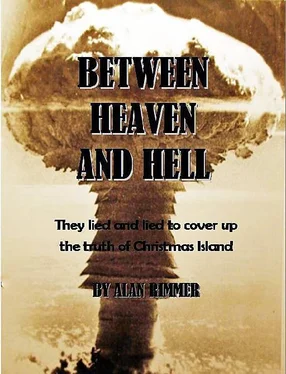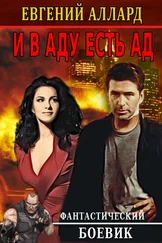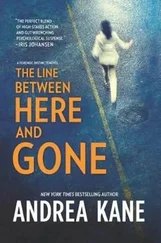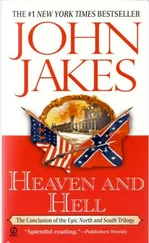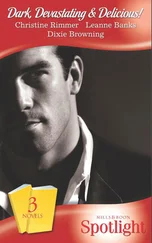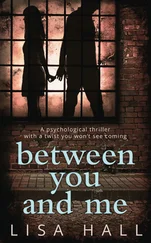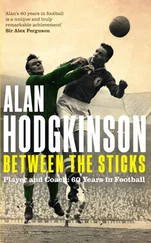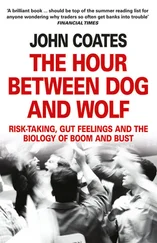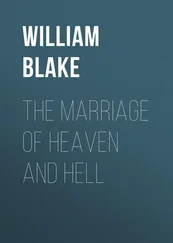Using a home-made filtering device and Geiger counter set up on the roof of a laboratory, Marston recorded huge levels of radioactive Iodine, Caesium and Strontium-90 in the air over the city.
He was furious when these measurements were officially denied, and accused the British government and William Penney (who was in personal charge at Maralinga at the time) of covering-up the incident.
Marston claimed he had measured radioactive iodine levels up to 5000 times higher than normal in the thyroids of sheep at two locations near Adelaide, enough to contaminate the food chain.
According to Marston, strontium-90, linked to bone cancer, and leukaemia was being ingested by children, via cows' milk; government policies at the time guaranteed a half pint of milk daily to every Australian schoolchild.
In papers published after his death, he complained to his friend, the nuclear physicist Sir Mark Oliphant: "I am more worried than I can convey about the expensive quasi-scientific pantomime that's being enacted at Maralinga under the cloak of secrecy. And even more so about the evasive lying that is being indulged in by public authorities about the hazard of fallout. Apparently Whitehall and Canberra consider that the people of northern Australia are expendable."
Marston later accused the Atomic Weapons Test Safety Committee and the British and Australian governments of lying. The presence of iodine-131 in animals, he warned, would result in increased cases of human cancer of the thyroid gland.
His outspoken criticisms meant he was ostracised by both Australian and British scientists who accused him of scaremongering. He had his equipment confiscated, and his research grants evaporated over-night.
Marston, who died in 1965, was posthumously vindicated in 1985 by the Australian Royal Commission who found that most of his calculations were correct.
When the Blair’s returned to the UK, health problems beset the family. Tony Blair was just 11, when a stroke deprived his father of speech for many years, and soon after his sister Sarah was hospitalised for two years with rheumatoid arthritis. His mother contracted thyroid cancer and was dead at the age of 52, after a long battle. It is well known that Tony Blair later suffered heart problems.
British medical researcher and toxicologist Dick Van Steenis who had access to much of Marston’s papers wasn’t surprised. "Adelaide was plastered with radioactive fallout from 11 to 16 October 1956 comprising plutonium-239, americium-241, iodine-131, strontium-90 and caesium-137," said Van Steenis. “Tony Blair’s mother died of thyroid cancer following that exposure.”
Dr Van Steenis, who studied medicine in Adelaide, further claimed: "All the medical conditions could have been triggered by exposure to radioactivity. And, as a youngster in Adelaide, drinking local milk Tony Blair is very likely to be at risk of bone cancer himself, almost certainly with a residue of strontium-90 in his bones and bone marrow. It is a hell of a catch-22 for the British prime minister. He has never denied the impact of the Maralinga tests on his family. He has never denied that radioactive fallout was ultimately the cause of his mother’s death. But he would not acknowledge it, because to do so would strengthen the legal case against his government for the compensation entitlements of British and Australian veterans.”
Bill Blair described the impact of the health problems in the family in a newspaper interview. He described his mother as a “very brave woman, adding: “She was in hospital for considerable periods. It was traumatic for all of us. Her death had the effect of ending a particular part of the family story. A year or so before she died, hoping the illness had gone away, she and my father bought a house that they began to renovate. She never got to live there."
Her death affected his brother Tony "very much… I think people have tended to underestimate the role my mother played in forming Tony's view of life. From Tony's perspective, I believe it was a combination of things that gave him the drive to succeed. The death of his mother affected him every bit as much as his father's stroke."
Tony Blair, for whatever reason, has chosen to ignore the possibility his family may have suffered. His spokeswoman when pressed for a comment derided it as “a silly season story”, and refused to comment further.
As the new millennium approached, the veterans received an unexpected windfall in the shape of a generous donation of £50,000 from distinguished British author Catherine Cookson.
This enabled them to fund a study by Dundee University into blood diseases among the veterans. The research uncovered evidence that many more veterans were stricken with blood cancers than NRPB studies had suggested. The Dundee research was backed up by death certificates and medical records, and blew a very big hole in Government’s entrenched position that veterans were not harmed by their participation in the tests.
But the NRPB, which by then was conducting its third study into the health of test veterans, was not impressed and issued a statement denouncing the research as ‘unscientific.’ It was a familiar mantra.
In 2000 Ken McGinley decided to step down as national chairman of the veterans association. He announced he would never give up the battle, but after 18 years he wanted to spend more time with his wife and daughter.
In truth he was exhausted by the internecine in-fighting that had broken out within the ranks of the association. Many members were openly voicing their disappointment about the way the organisation was being run, and of course the lack of progress being made.
McGinley was replaced by John Lowe, a mild-mannered former national service seaman who had witnessed the first Grapple tests at Maldon Island in 1957. He was joined by Jeff Liddiatt, who served with the RAF in Maralinga from 1959-1960.
Between them they managed to fill the vacuum caused by McGinley’s departure and prevent the organisation from imploding. They decided to adopt a quieter approach to the campaign, working behind the scenes to persuade MPs from all parties to support the cause. It was an uphill struggle.
It was 2002, and figures released by the veterans showed they were dying off at the rate of three a month. They were limping into extinction. It took a brainwave from Fleet Street legend Richard Stott to put them back on the agenda.
Stott, who had edited three national newspapers during a distinguished career, had always been a supporter of the nuclear veterans and had used his newspapers to campaign on their behalf. One of his particular bailiwicks was the fate the children of the veterans, something that tended to be ignored by the rest of the media.
A campaign by one of Stott’s newspapers back in the 1980s had uncovered the scandal of the “Atom Bomb Kids” which identified hundreds of children as being affected by their father’s participation in the atomic bomb tests. Stott now wanted to find out if the “curse of the atom bomb” had reached across to the next generation.
Reporters launched a new investigation. Newspaper files and other research materials stretching back 20 years eventually identified 350 families of nuclear veterans who had complained about health problems in their children.
What was the fate of the grandchildren? Letters were sent; phone calls were made; reporters knocked on doors. The results were astonishing: 115 families of nuclear veterans were identified who had health problems in 169 of their grandchildren.
Their testimonies were shocking. Sicknesses such as leukaemia and other cancers were way above average; deformities, miscarriages, stillbirths and congenital illnesses were rife. Skin disease, eye problems, deafness and mental health issues were commonplace. It was as though the gene pool of entire generations had been contaminated.
Читать дальше
